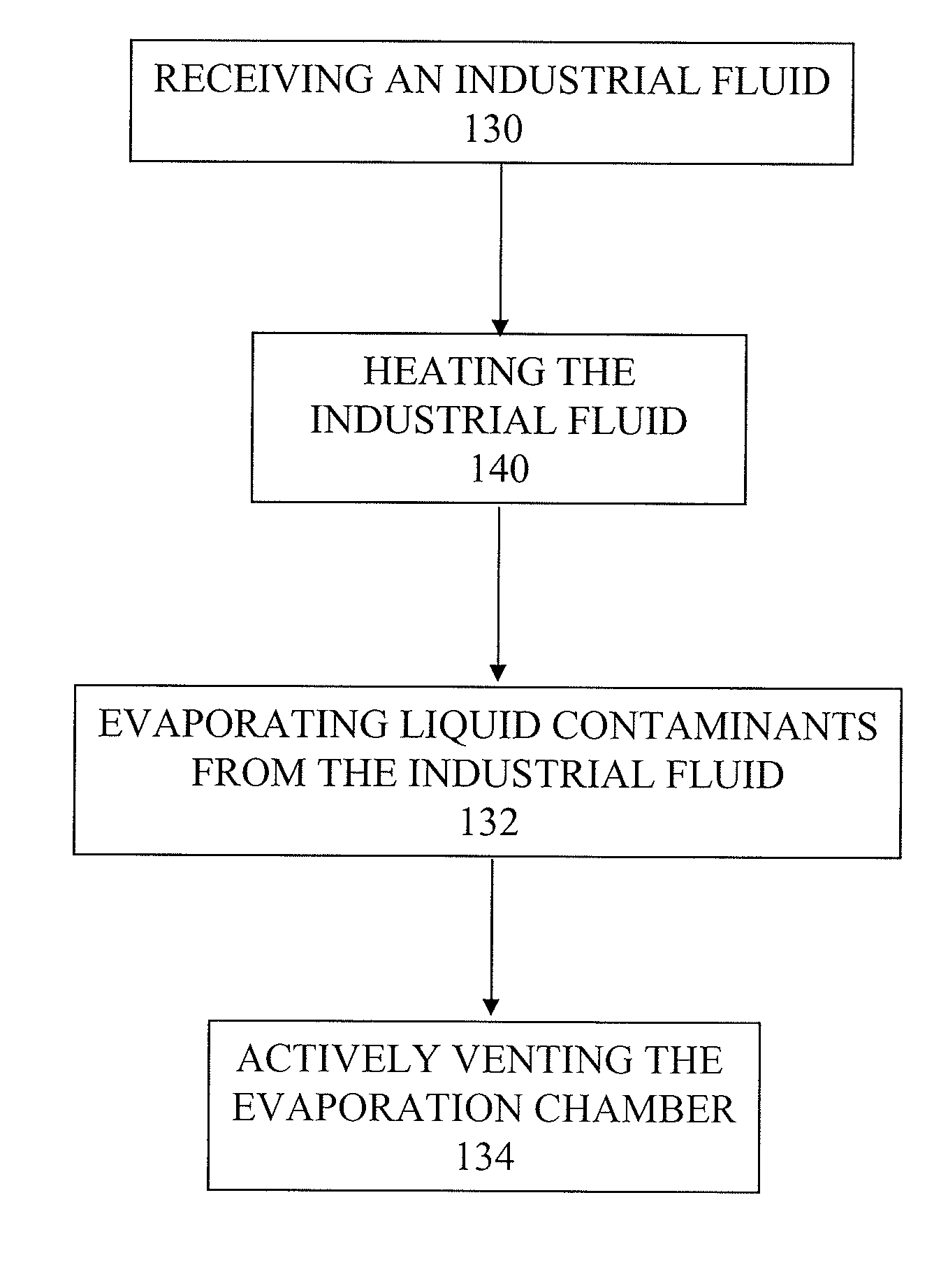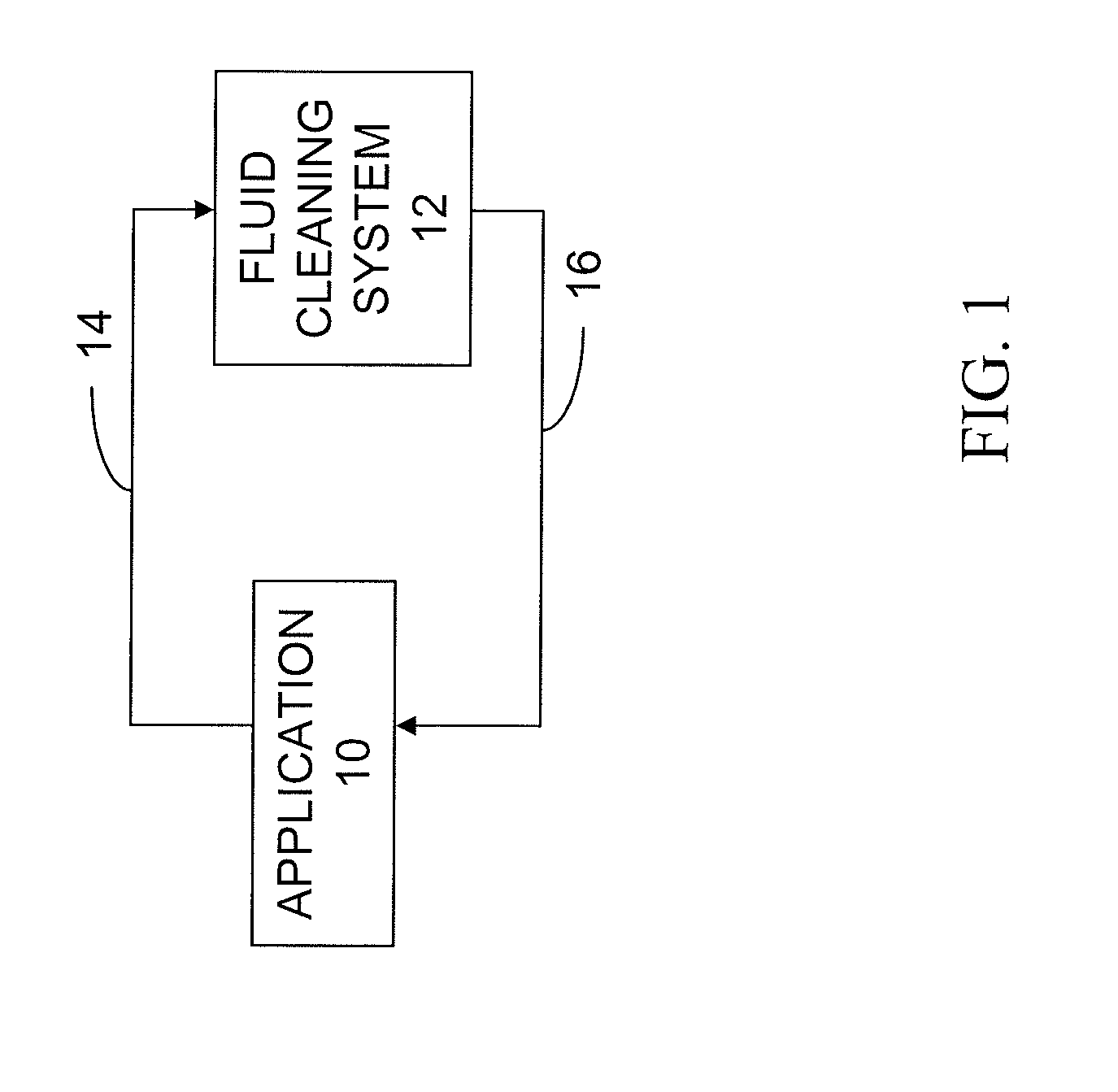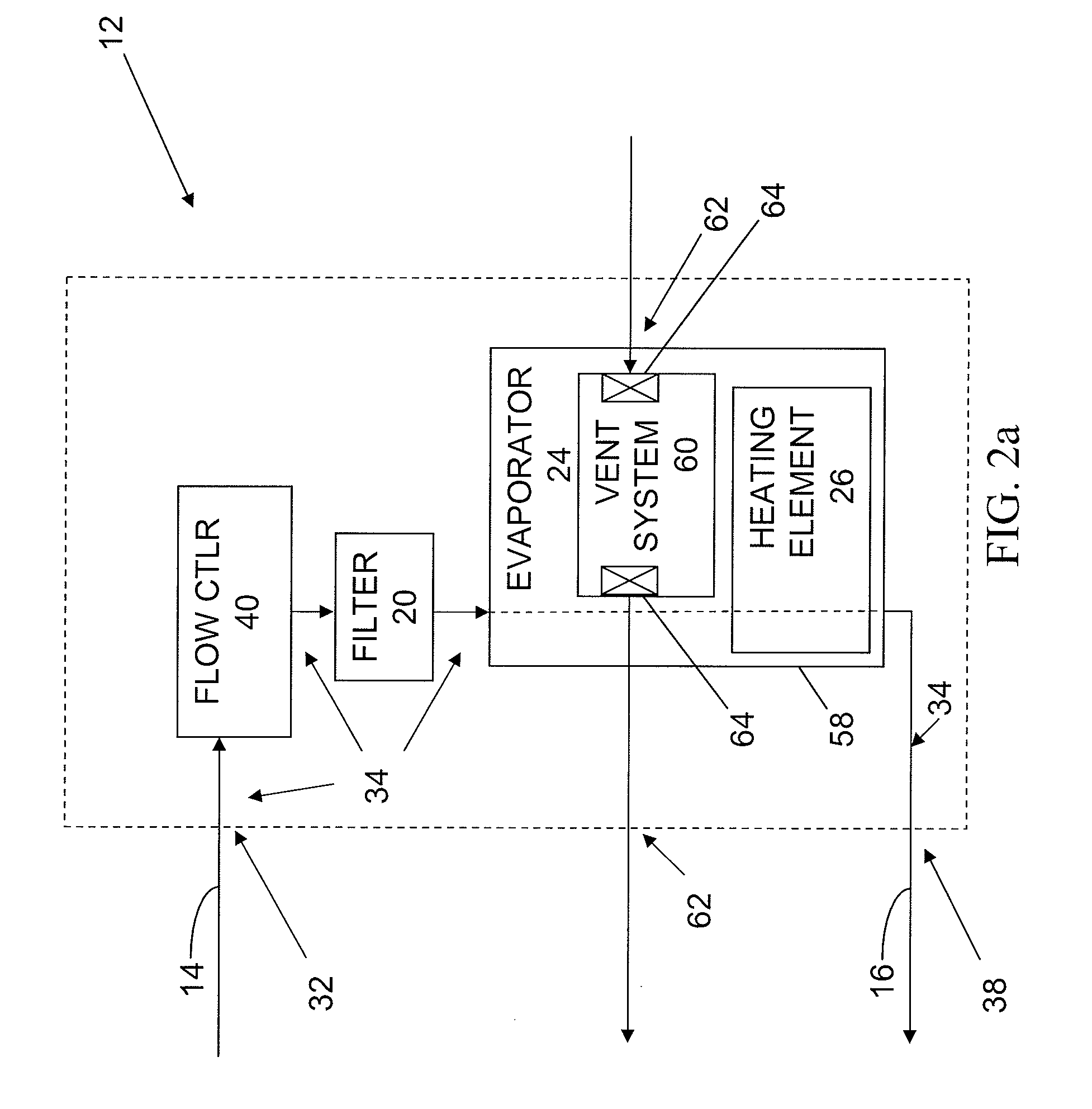Method and apparatus for fluid cleaning
a technology of fluid cleaning and method, applied in the direction of filtration separation, evaporator regulation/control, separation process, etc., can solve the problems of inability to clean fluid, disadvantages, and inability to operate in the prior art, so as to facilitate the state change of liquid contaminants, optimize the performance of the cleaning system, and save energy
- Summary
- Abstract
- Description
- Claims
- Application Information
AI Technical Summary
Benefits of technology
Problems solved by technology
Method used
Image
Examples
Embodiment Construction
[0046]FIG. 1 is a schematic illustrating one example of the use of the present invention. In that embodiment, an application 10 is connected to a fluid cleaning system 12. Fluid from the application 10 is provided to the fluid cleaning system 12 via a supply line 14, where the fluid is cleaned as described in more detail hereinbelow. After cleaning, the fluid is returned to the application 10 via a return line 16.
[0047]The application 10 may be any mechanism or system utilizing a fluid which becomes contaminated. For example, the application 10 may be an internal combustion engine, a hydraulic system, a gearbox, or other applications. The fluid may be, for example, lubricating oil, hydraulic fluid, cooling fluid, or other fluids susceptible to contamination, such as solid particulate contamination and / or liquid contaminates. If left untreated, contaminants, both liquid and particulate, will usually reduce the usable life of the fluid and the application 10.
[0048]The fluid may be any...
PUM
| Property | Measurement | Unit |
|---|---|---|
| temperature | aaaaa | aaaaa |
| humidity | aaaaa | aaaaa |
| power | aaaaa | aaaaa |
Abstract
Description
Claims
Application Information
 Login to View More
Login to View More - R&D
- Intellectual Property
- Life Sciences
- Materials
- Tech Scout
- Unparalleled Data Quality
- Higher Quality Content
- 60% Fewer Hallucinations
Browse by: Latest US Patents, China's latest patents, Technical Efficacy Thesaurus, Application Domain, Technology Topic, Popular Technical Reports.
© 2025 PatSnap. All rights reserved.Legal|Privacy policy|Modern Slavery Act Transparency Statement|Sitemap|About US| Contact US: help@patsnap.com



